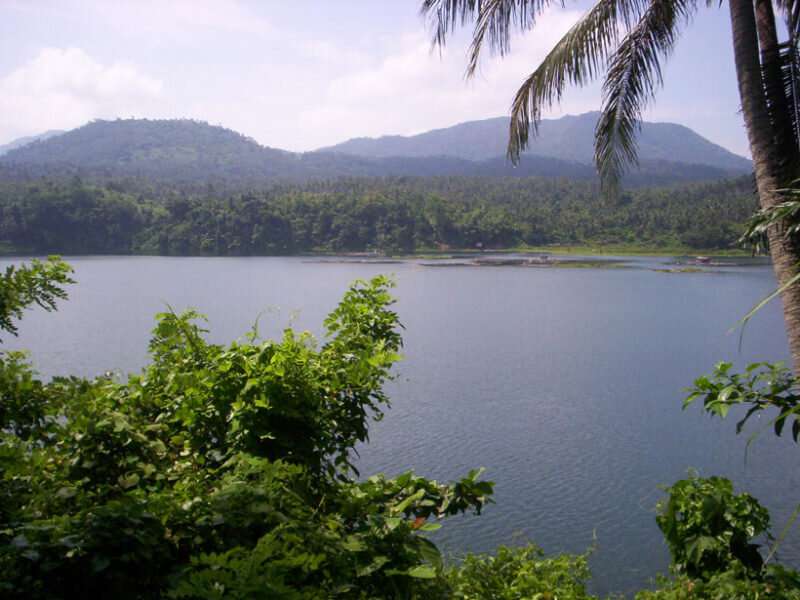Tropical lakes may emit more methane

Methane is not the most abundant greenhouse gas in our atmosphere, but it is among the most potent. Roughly a quarter of global methane emissions come from natural sources, and freshwater ecosystems are the largest source of atmospheric methane. Most of the data on methane dynamics in aquatic ecosystems come from boreal and temperate environments. Less is known about the fate of methane in tropical lakes.
To fill that gap, Mendoza-Pascual et al. tracked methane storage and other physiochemical properties in three volcanic crater lakes in the Philippines—Yambo, Pandin, and Calibato—where the northeast and southwest monsoons drive the regional climate. The team examined the impact of both weather fluctuations and mixing on methane concentrations. The three lakes are located relatively close together on Luzon Island and thus experience similar weather conditions but differ in physical characteristics, including maximum depth and thermal stratification.
The team collected water samples once a month between April 2018 and February 2019 at various depths in each lake and created vertical profiles of dissolved methane concentration, water temperature, and dissolved oxygen levels. They used data from the Philippine Atmospheric, Geophysical and Astronomical Services Administration to track temperature, rainfall, wind speed, and air pressure over the same period.
The team found that mixing events, driven by changes in air temperature or pressure as the monsoon seasons progressed, affected methane storage in all three lakes. Strong stratification in the deeper lakes, the authors note, was more conducive to methane production and storage.
Water temperature was also linked to methane production, and higher concentrations of methane can be found in the profundal, or deep, zones of tropical lakes compared to temperate or subtropical lakes. Overall, the study suggests that lakes with higher water temperatures may contribute more to methane emissions, with tropical lakes emitting between 58% and 400% more methane than lakes in more temperate zones.
More information: Milette U. Mendoza‐Pascual et al. Controlling Factors of Methane in Tropical Lakes of Different Depths, Journal of Geophysical Research: Biogeosciences (2021). DOI: 10.1029/2020JG005828
Provided by Eos
This story is republished courtesy of Eos, hosted by the American Geophysical Union. Read the original story here.



















